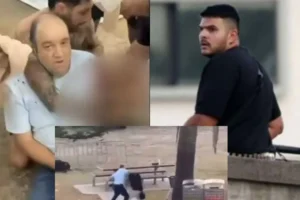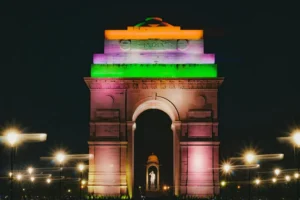
India steps up its efforts to push ahead the extradition of Tahawwur Hussain Rana. He was charged with the 26/11 Mumbai terror attack. Now the attention is directed at his associate, David Coleman Headley. Headley’s ties to the plotting of the 2008 Mumbai Terror attack. It killed 166 and injured considerably more has solidified his place in the news cycle today.
David Coleman Headley: The Man Behind the Name
David Coleman Headley, formerly referred to at different times as Daood Sayed Gilani. He was born in Washington D.C. to an American mother and Pakistani father (who was a diplomat). His youth involved living between Pakistan and the United States in an existence woven of oppositional fabric-going to school in Pakistan. He worked in his family’s bar in Philadelphia, and ultimately an ominous trajectory, profession that thrust him into global terror networks.
Headley’s journey into terrorism began in the late 1990s. It was when he was caught with heroin. Subsequently, he became an informant for the U.S. Drug Enforcement Administration (DEA). While he was serving the U.S. government, he also had undisclosed connections to the Pakistan-based terrorist group Lashkar-e-Taiba (LeT).
How Headley Is Connected to Tahawwur Rana
Headley and Tahawwur Rana had known each other for many years, having first met as schoolboys in Pakistan. Rana was an ethnic Pakistani businessman living in Canada. He helped facilitate Headley’s travel by providing coverage through his immigration business. Therefore, while he was an American businessman engaging in legitimate businesses, Headley was able to travel to India multiple times using a different identity.
The investigation revealed that otherwise completely unrelated, Rana’s assistance was instrumental to Headley in conducting reconnaissance of some of the major targets in Mumbai. It included high-end hotels, transit locations, and community locations related to the Jewish community. These reconnaissance activities were instrumental to LeT’s ability to carry out the acts of terror that constituted the 26/11 attacks. Rana’s pending extradition is bringing renewed scrutiny on their deadly alliance.
The Role Headley Played in 26/11
Headley is said to have undergone several training camps run by LeT in Pakistan from 2002 to 2005. Following these camps, he was instructed to “conduct surveillance” in India, which he did in five trips to that country, preceding the attack. Headley’s surveillance entailed “detailed sketches” of numerous locations in Mumbai that included the Taj Mahal Palace Hotel, Chhatrapati Shivaji Maharaj Terminus and, Chabad House.
His surveillance supported the ability of ten armed militants to carry out a 60-hour shooting rampage throughout Mumbai in November 2008. In 2009, upon his apprehension in America, Headley admitted to his role and agreed to cooperate with the prosecution. He privided exhaustive information on Lashkar-e-Taiba activities, Pakistan’s support for the group, and the general operations of terrorist groups. His cooperation and information led to U.S. law enforcement officials offering him a deal, and in exchange for his cooperation, he would avoid a death sentence.
Where Is Headley Now?
David Coleman Headley is currently incarcerated in the United States. He is serving a 35-year sentence for charges involving terrorism. He also plotted a terrorist act against a Danish newspaper. It had drawn controversial cartoons of the Prophet Muhammad.
Although there have been multiple attempts by the Indian government to extradite him, those requests have been denied by the United States. It is based on an agreement Headley made to cooperate with federal authorities. Despite this, his testimony has been useful to Indian officials and the larger effort to combat terrorism globally. It provides connections to cross-border terrorism and how Pakistan financed that terrorism by facilitating extremist organizations.
Where To Next: Rana’s Extradition and India’s Case
A joint team of the National Investigation Agency (NIA) and the Research and Analysis Wing (RAW) from India is preparing technical groundwork to extradite Tahawwur Rana. His extradition will support India’s case on the 26/11 conspiracy. It will also provide additional details on the logistics and execution of the attacks.
As this case is back in the recent news updates, it reminds us of the scar that 26/11 left behind. Also, it reminds of the multinational web of players involved in this case. The focus on David Coleman Headley and Tahawwur Rana also speaks to the need for an ongoing international collaboration to fight against terrorism.






